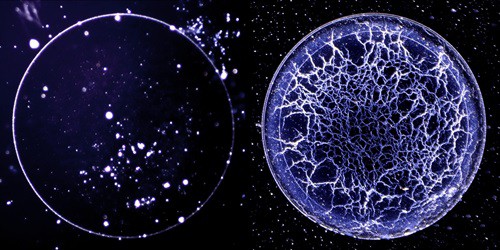
Derived from the Gaelic word for water, it’s usually spelled whiskey for spirits made in the US and Ireland and whisky everywhere else. And whisky is big business in places like Scotland and Kentucky, where distillers are keen to protect their markets from counterfeits.
Now, physicists at the University of Louisville in Kentucky have found a way to identify genuine American bourbon whiskey from the pattern of residue it leaves after evaporating. Unlike other spirits, which leave spots of residue, the American tipple leaves a distinctive spiderweb pattern.
Describing the effect in Physical Review Fluids, Stuart Williams and colleagues believe that the pattern is linked to chemicals that seep into the whiskey as it is aged in barrels lined with charred wood. This is unlike other types of whisky, which are not aged in charred barrels.
Whisky is sometimes aged in wine casks, and it is often said that a good wine can be identified by an abundance of tears. These are droplets of wine that form on the side of a glass after it is swirled.
In “A theory for undercompressive shocks in tears of wine”, Yonatan Dukler, Hangjie Ji, Claudia Falcon and Andrea Bertozzi of the University of California, Los Angeles take a fresh look at this famous effect. They conclude that wine tears “emerge from a reverse undercompressive shock originating at the meniscus”.
Try saying that after a few glasses of research into the subject.



